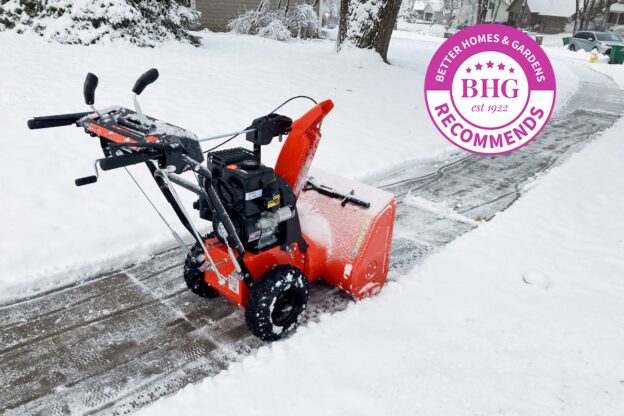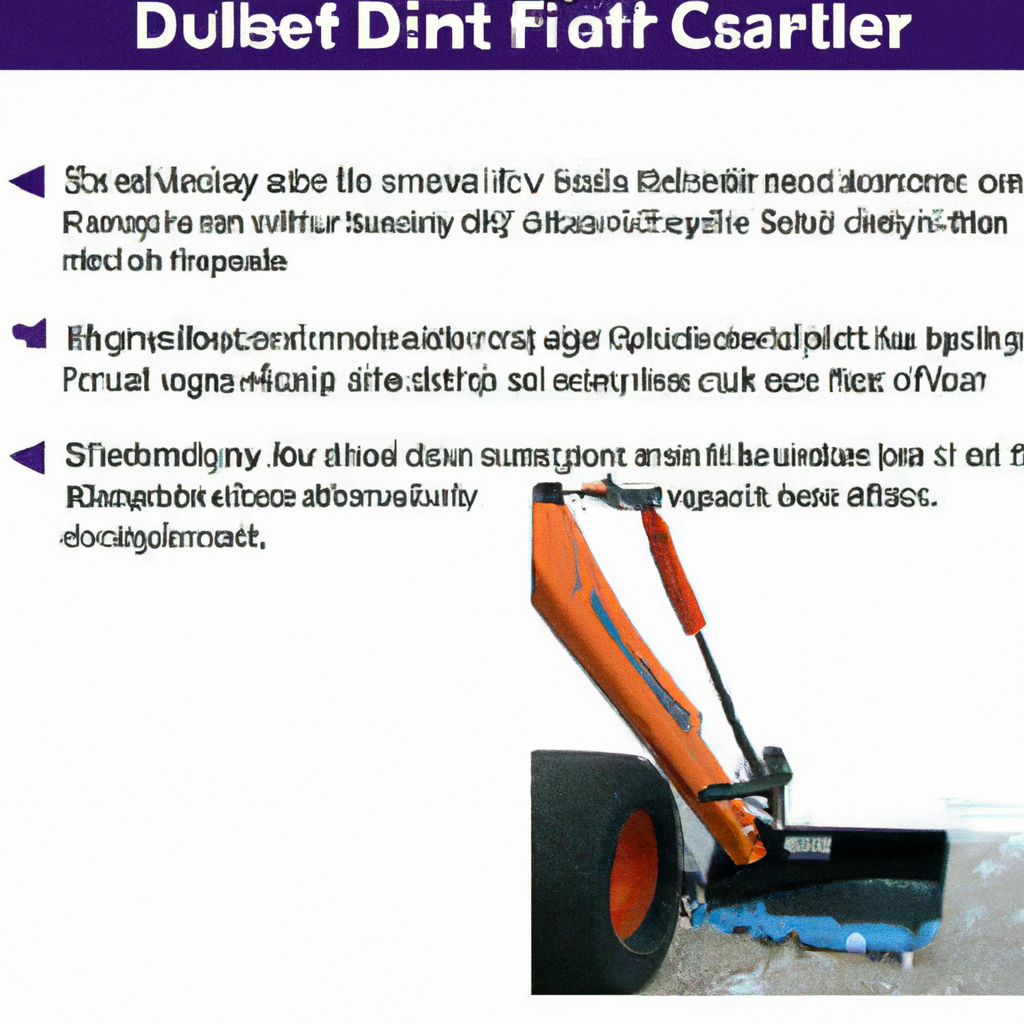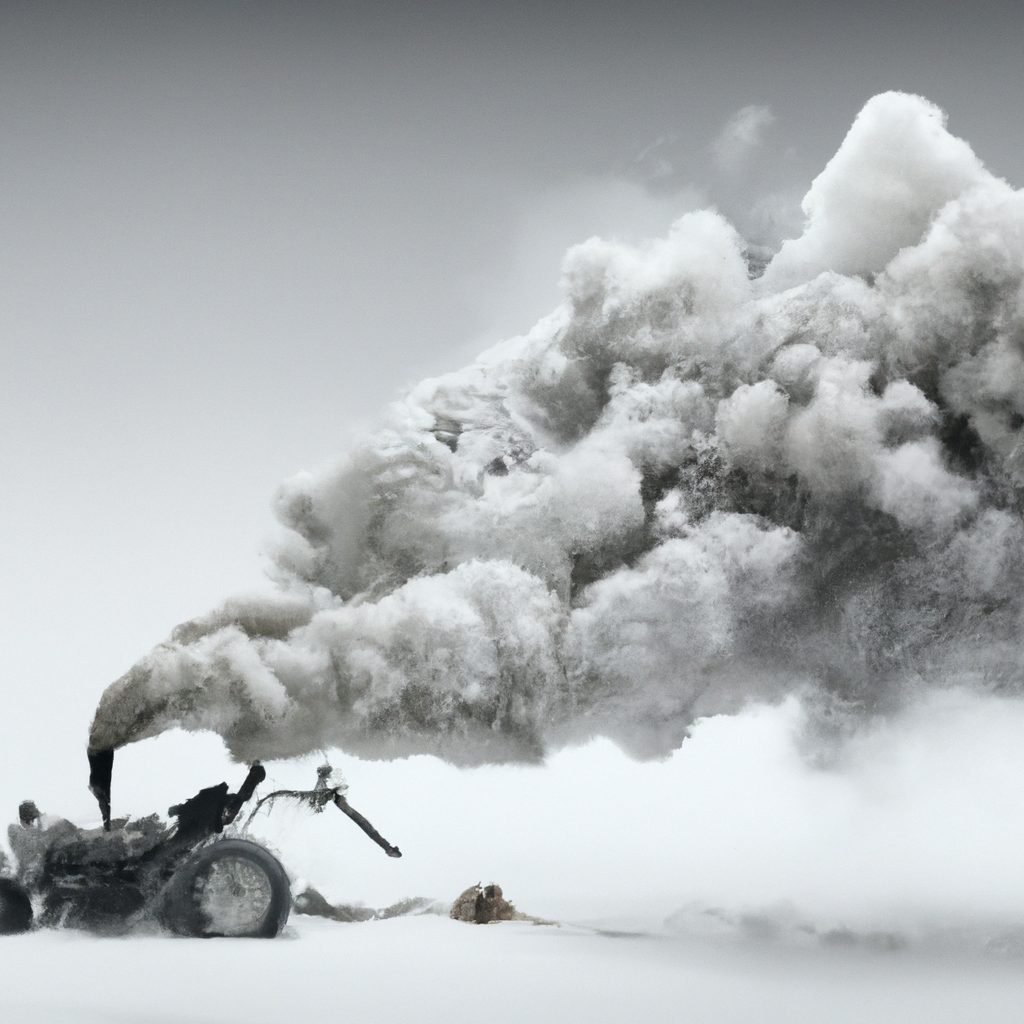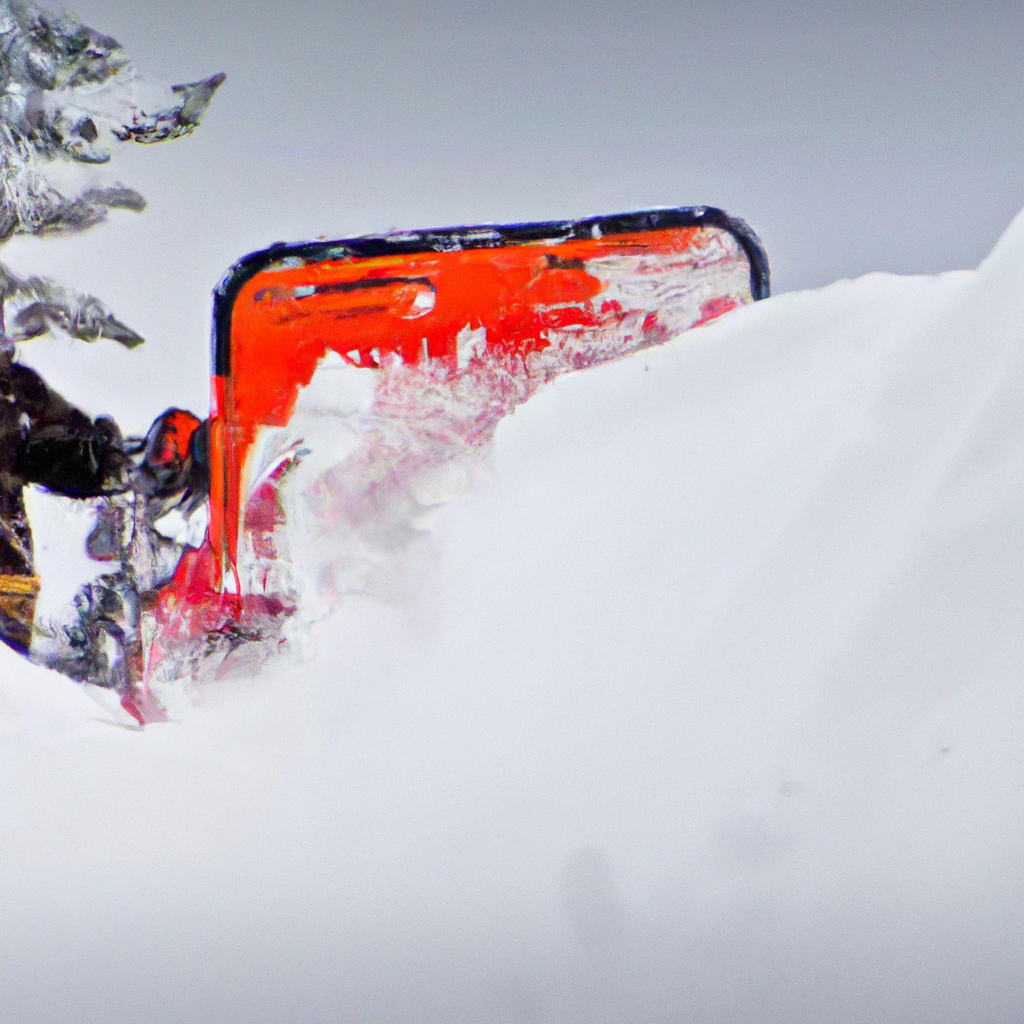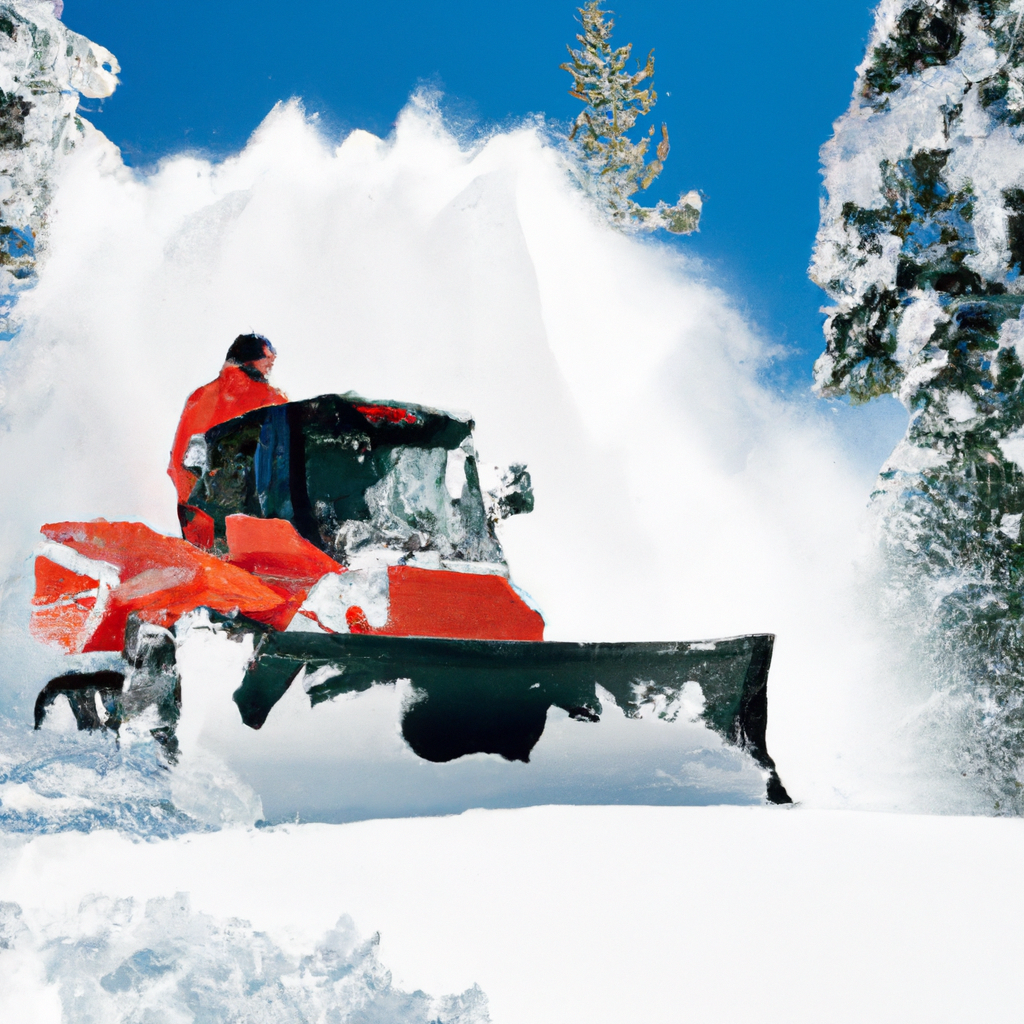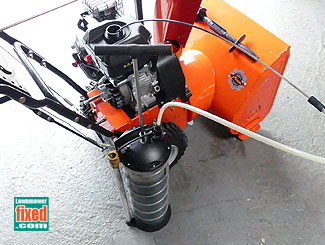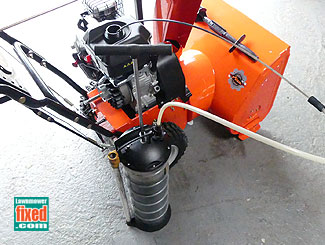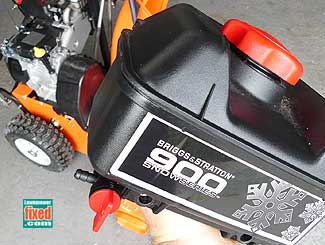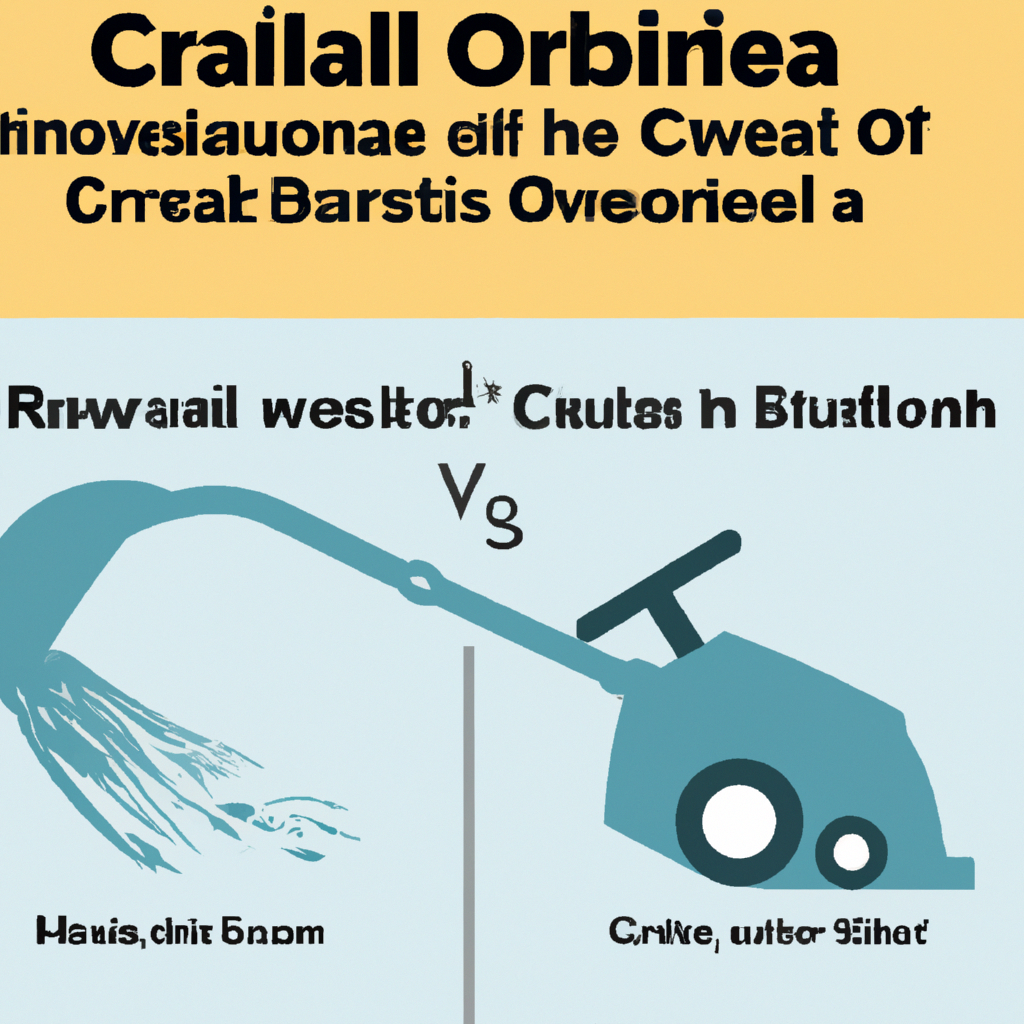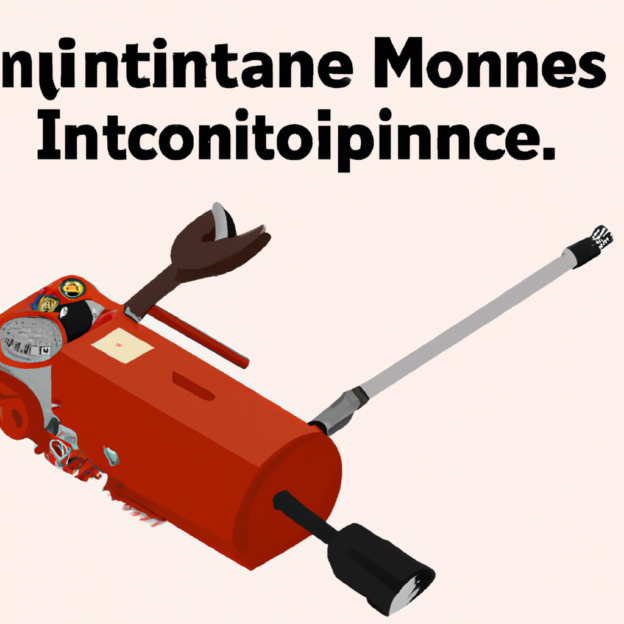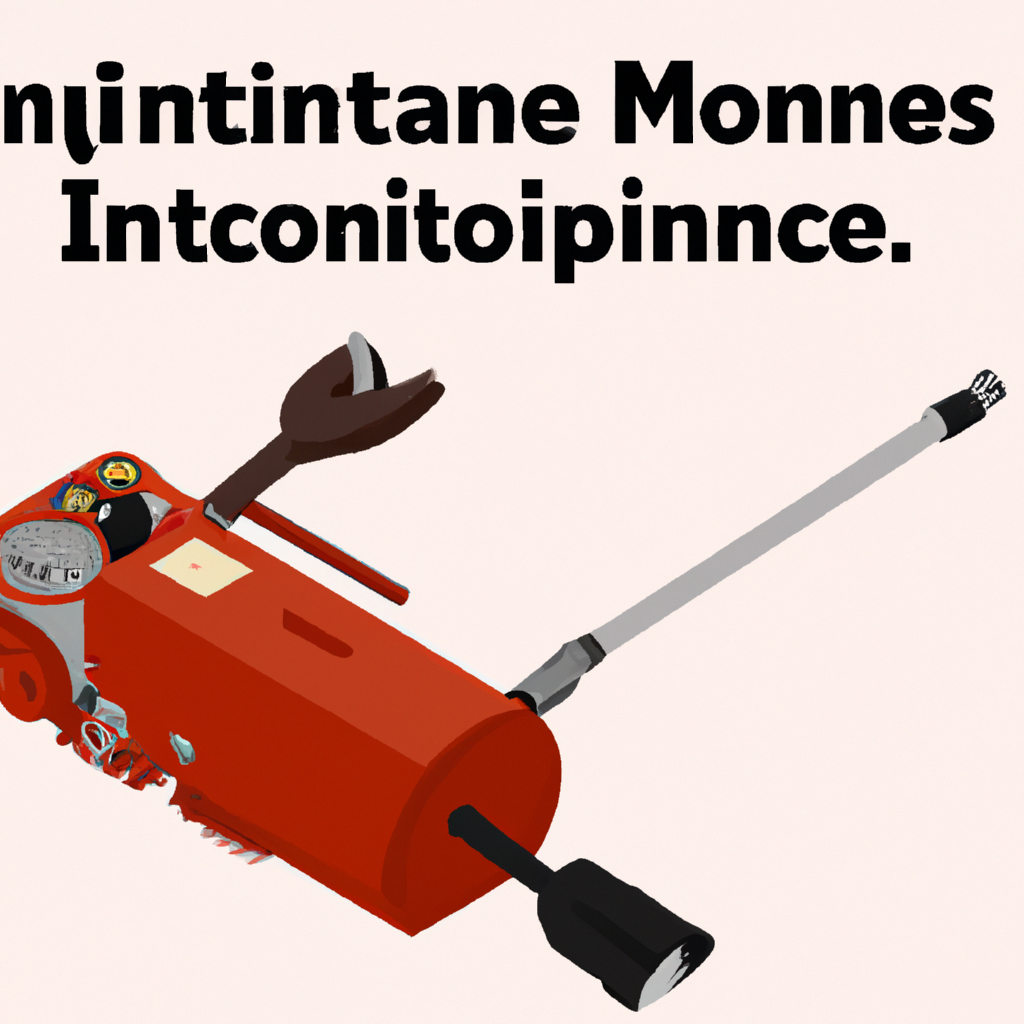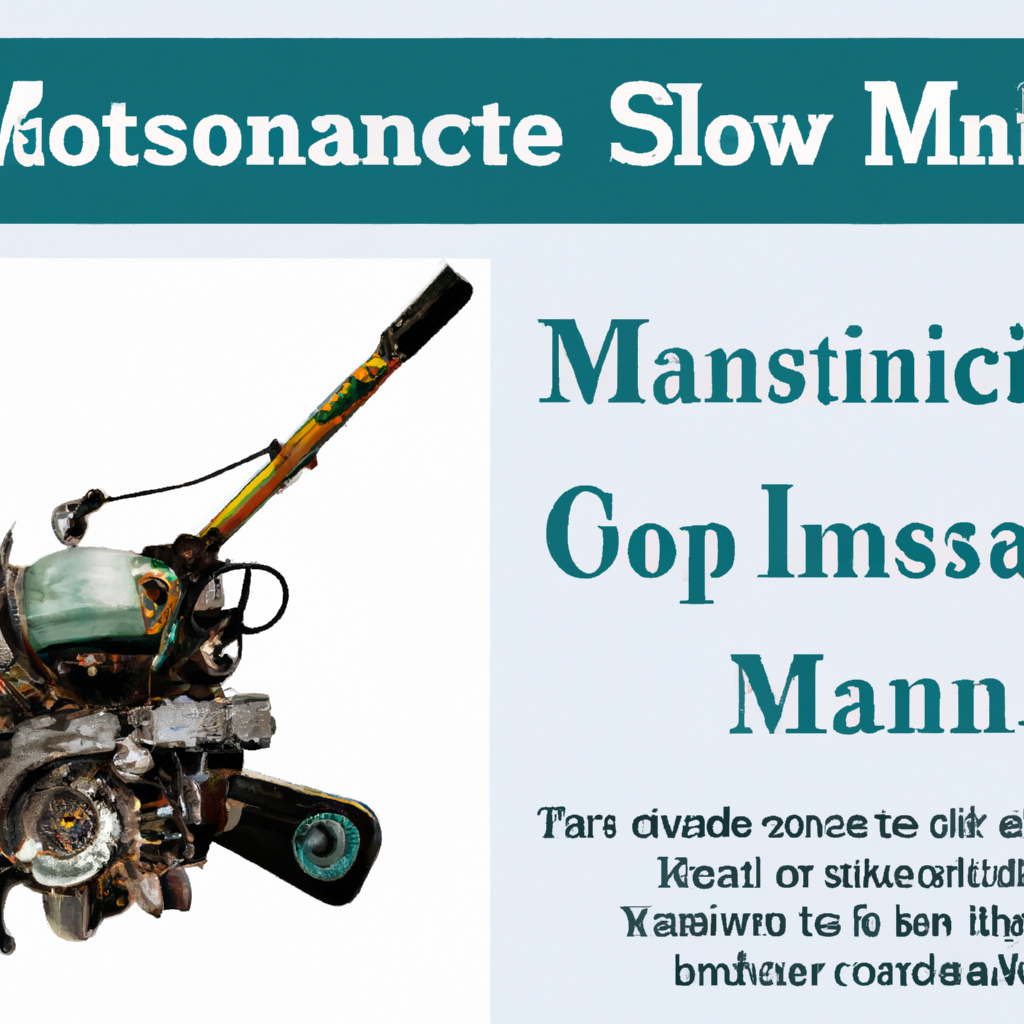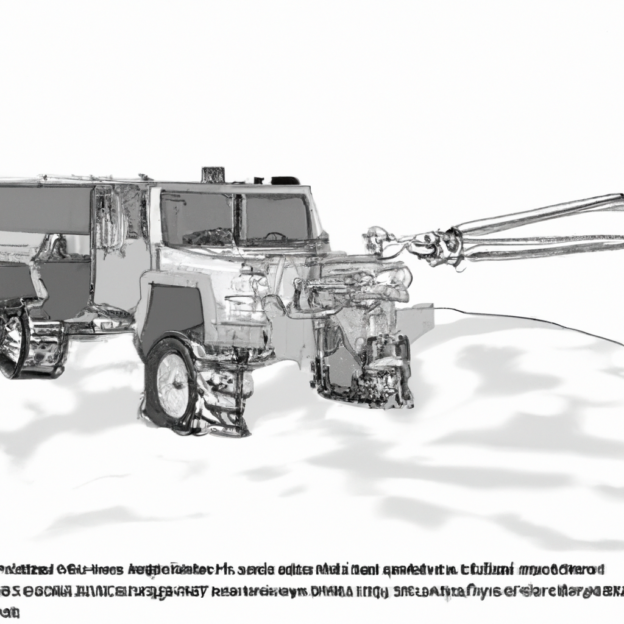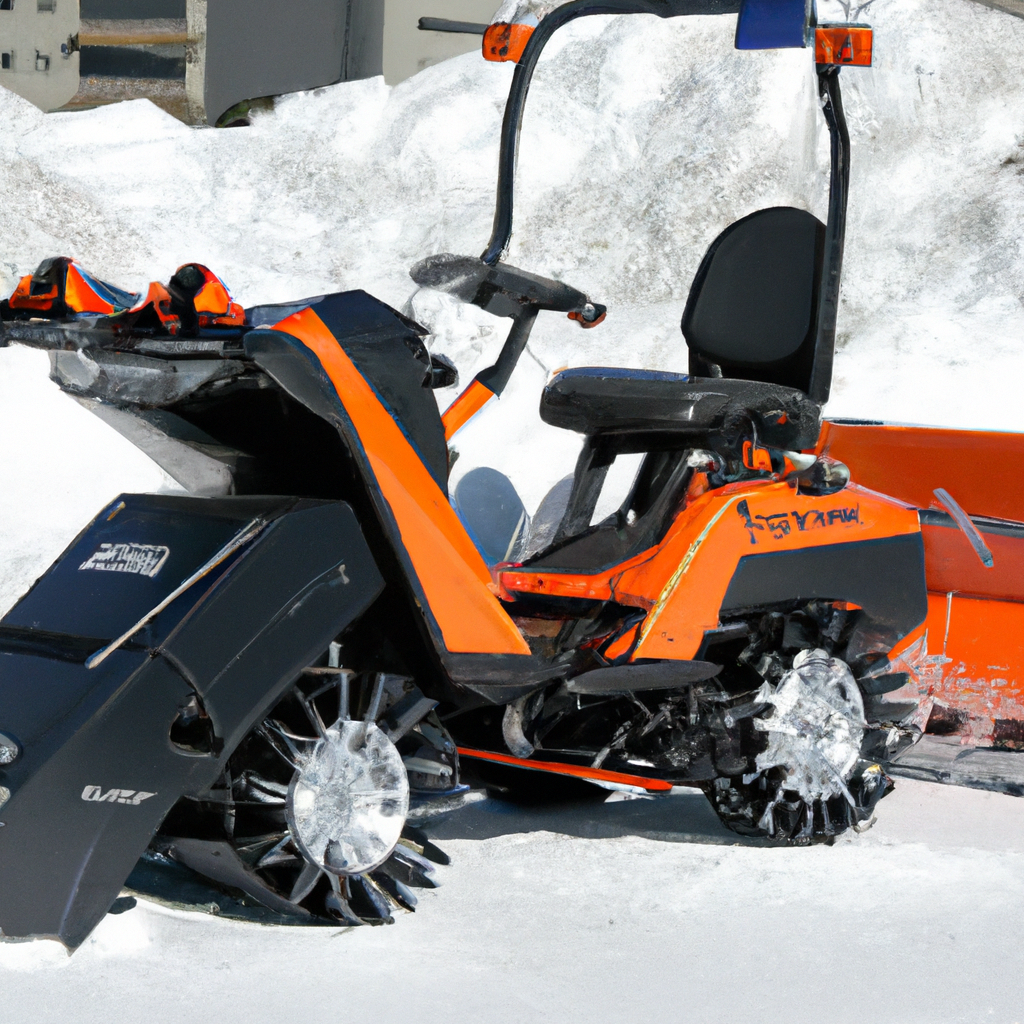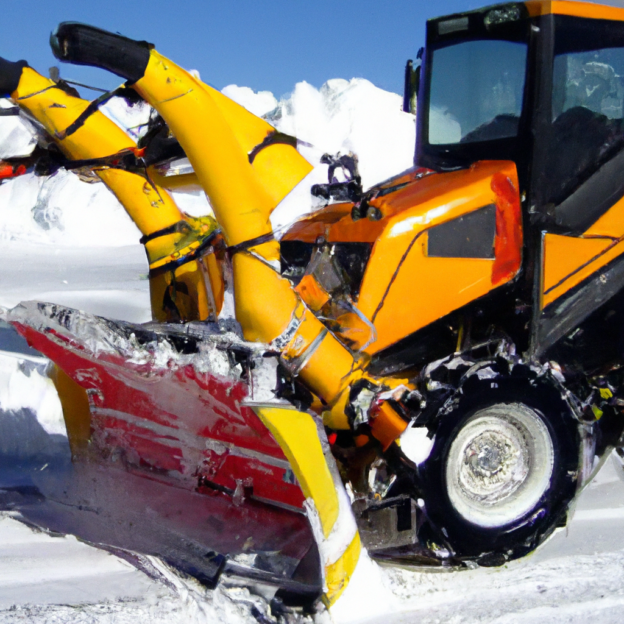Imagine waking up after a heavy snowfall, eager to clear your driveway and walkways. But as you consider using your trusty snowblower, the thought of potential damage to your beloved plants and garden starts nagging at the back of your mind. How can you enjoy the convenience of a snow-free property without sacrificing the beauty of your outdoor space? In this article, we will explore some practical tips and strategies to ensure that your plants and garden remain unharmed while using a snowblower. So put your worries to rest and let’s dive into the world of snowblowing with peace of mind.
Choosing the Right Snowblower
When it comes to choosing the right snowblower for your garden, there are a few key factors to consider. The first thing to take into account is the size of your garden. If you have a small to medium-sized garden, a compact and lightweight snowblower would be more suitable. On the other hand, if you have a large garden with plenty of space to cover, a more powerful and heavy-duty snowblower would be a better choice.
In addition to the size of your garden, it is also important to opt for a snowblower with adjustable settings. This allows you to customize the speed and height of the snowblower, ensuring that it is suitable for your specific garden needs. Being able to adjust the settings will provide you with greater control and flexibility when clearing snow.
Another important feature to look for in a snowblower is chute control. This allows you to direct the snow in a specific direction, away from your plants and delicate areas. Being able to control where the snow is thrown will help minimize any potential damage to your garden.
Lastly, it is worth investing in a snowblower with an anti-clog feature. This feature helps prevent the snowblower from clogging up with snow and debris, ensuring that it continues to function properly even in heavy snowfall. An anti-clog feature will save you time and effort by reducing the need for constant maintenance and cleaning.
Preparing Your Garden Before Snow Removal
Before using a snowblower to remove snow from your garden, it is important to take some preparatory steps to protect your plants. One of the first things you should do is stake your plants. This will help support them and prevent them from being damaged or bent under the weight of the snow. Staking your plants beforehand will give them the necessary support they need to withstand the snowfall.
Another step to take is to trim and prune your plants. By removing any dead or damaged branches, you are not only tidying up your garden but also reducing the risk of these branches breaking under the weight of the snow. Trimming and pruning your plants before the snowfall will promote healthy growth and prevent any unnecessary damage.
If you have any fragile or delicate plants in your garden, it may be best to remove them altogether before the snowfall. These plants are more susceptible to damage and may not survive the harsh winter conditions. By temporarily removing them and storing them in a protected area, you are ensuring their survival and allowing them to thrive once the snow has melted.
For sensitive plants that you are unable to remove, covering them with a protective layer is essential. Using materials such as burlap or horticultural fleece, carefully cover your plants to shield them from the harsh winter elements. This layer of protection will help retain heat and prevent cold winds from damaging your plants.
Using the Snowblower Properly
When using a snowblower to remove snow from your garden, there are a few guidelines to follow to ensure that you are using it properly without causing any harm to your plants.
Firstly, before starting the snowblower, it is important to clear the area of any debris or obstacles. This includes branches, rocks, and any other objects that may be hidden under the snow. Clearing the area will prevent the snowblower from getting clogged and reduce the risk of any damage to your machine or plants.
While the snowblower can efficiently remove snow, it is advisable to clear the snow manually around plants and delicate areas. Using a shovel or snowbrush, carefully remove the snow in these areas to avoid accidentally damaging your plants. Manual snow removal allows for more precision and control, ensuring that your plants remain unharmed during the process.
Adjusting the height and speed settings of the snowblower is crucial in protecting your plants. Make sure to set the height of the snowblower blade according to the depth of the snow. Setting it too low can damage your plants, while setting it too high may leave behind a layer of snow. Additionally, adjusting the speed of the snowblower to a slower setting will give you greater control and reduce the risk of snow being blown directly onto your plants.
Directing the snow away from your plants is another important step in ensuring their protection. Use the chute control feature of the snowblower to point the direction of the snow away from your plants and delicate areas. This will prevent any snow from accumulating on your plants and potentially causing damage.
Lastly, avoid using excessive force or pressure when operating the snowblower. Overly aggressive use can damage plants, especially if they are covered by a layer of snow. Take your time and be gentle when maneuvering the snowblower around your garden to minimize any potential harm to your plants.
Protecting Plants from Snow and Ice
Apart from using a snowblower to remove snow from your garden, incorporating additional protective measures can help safeguard your plants from the harsh winter conditions.
Creating physical barriers around your plants can help shield them from snow and ice. This can be done by constructing temporary fences or installing windbreaks. These barriers will help reduce the impact of strong winds and prevent snow from accumulating on your plants, reducing the risk of damage.
Applying anti-desiccant sprays to your plants before the onset of winter can provide them with an extra layer of protection. These sprays help to reduce moisture loss from the leaves and prevent them from drying out in the winter cold. Anti-desiccant sprays are particularly beneficial for evergreen plants and shrubs.
Using burlap or similar materials to cover your plants can offer them a protective layer against snow and ice. Wrapping the plants loosely with burlap allows for air circulation while still shielding them from the elements. This method is especially effective for delicate plants that cannot withstand the weight of snow.
For particularly sensitive plants, providing extra insulation is key to their survival. This can be achieved by mulching around the base of the plants with organic matter such as straw or leaves. Mulching helps to regulate soil temperature and retain moisture, providing a cozy environment for your plants during the winter months.
Post-Snowblowing Garden Care
Once you have successfully used a snowblower to remove snow from your garden, it is important to take some post-snowblowing care to ensure the well-being of your plants.
Shoveling any remaining snow by hand is necessary, especially around plants and delicate areas where the snowblower may not have reached. Using a shovel or snowbrush, gently remove the remaining snow to prevent any potential damage to your plants.
Inspecting your plants for any damage or breakage is crucial after snow removal. Snow can be heavy and may have weighed down branches or caused them to snap. Carefully examine your plants and prune any damaged or broken branches to encourage new growth and maintain their health.
If there is any excess snow buildup on your plant branches, carefully remove it to prevent the branches from bending or breaking under the weight. Use a soft broom or your hands to brush off the snow, being careful not to apply too much pressure or force that could harm the plants.
Watering dry or frozen plants after snow removal requires special care. It is important to wait until the soil has thawed before attempting to water your plants. Watering frozen plants can cause more harm than good, as the water will not be able to penetrate the frozen soil. Once the ground has thawed, water your plants gently and evenly to rehydrate them.
Common Mistakes to Avoid
There are several common mistakes that gardeners often make when using a snowblower or dealing with snow removal around their plants. By being aware of these mistakes, you can avoid them and better protect your plants.
One common mistake is not considering the sensitivity of your plants before using a snowblower. Some plants are more delicate and susceptible to damage than others. Take the time to identify these plants and take extra precautions to protect them, such as manual snow removal or using barriers to shield them from snow and ice.
Neglecting to clear debris from your garden before using a snowblower is another mistake to avoid. Branches, rocks, or any other objects can get caught in the snowblower and potentially cause damage to your plants or the machine itself. Clearing the area beforehand will ensure a smoother and safer snow-removal process.
Blowing snow directly onto your plants is a mistake that can easily be avoided with proper chute control. Directing the snow away from your plants will prevent it from piling up and potentially causing harm. Use the chute control feature of your snowblower to redirect the snow in a safe direction.
Using incorrect snowblower settings is another common mistake that can lead to damage. Make sure to adjust the height and speed settings of your snowblower according to the depth of the snow and the sensitivity of your plants. Using too high a speed or setting the blade too low can harm your plants, so take the time to adjust the settings properly before starting.
Alternative Methods of Snow Removal
While using a snowblower is a popular and efficient method of removing snow from your garden, there are alternative methods that you can consider.
Shoveling by hand is a traditional method that allows for more precision and control. While it may require more physical effort, shoveling by hand ensures that you have direct control over the snow removal process and can carefully navigate around your plants.
Using a snow pusher or brush is another alternative to consider. These tools are designed specifically for snow removal and can be effective in clearing snow from paths, driveways, and other areas without causing damage to your plants.
If you prefer to leave the snow removal to the professionals, hiring a snow removal service is a convenient option. These services have the equipment and expertise to quickly clear snow from your garden without causing harm to your plants. It may be a more costly option, but it saves you time and effort in the long run.
Winterizing Your Garden
Winterizing your garden is an important step in preparing it for the cold winter months. By taking a few simple steps, you can protect your plants and ensure their survival until spring.
Applying mulch and compost to your garden beds is a great way to insulate the soil and protect your plants’ roots from freezing temperatures. Mulch acts as a blanket, retaining heat and moisture in the soil, while compost adds essential nutrients to nourish your plants during the dormant season.
Covering garden beds with straw or leaves is another effective method of winterizing. This additional layer of protection helps regulate soil temperature, prevents frost from penetrating the soil, and keeps your plants safe from freezing temperatures. Mulch or compost can be used as well in this method.
Draining and storing garden hoses is crucial to prevent them from freezing and potentially bursting. Disconnect the hoses from the faucets, drain any remaining water, and store them in a dry and protected area until spring. This will extend the lifespan of your hoses and prevent any damage caused by freezing temperatures.
Protecting garden structures from snow and ice is also important for their longevity. Remove any snow buildup from arbors, trellises, or other structures to prevent them from collapsing under the weight. Applying a protective coating or sealant to wooden structures will help prevent moisture damage and prolong their lifespan.
Selecting Snow-Tolerant Plants
Choosing the right plants for your garden that can tolerate snow and cold temperatures is essential for a thriving winter garden. Here are some considerations when selecting snow-tolerant plants:
Researching plants that are suitable for your region’s climate is the first step. Different plants have different tolerances to cold and snow, so it is important to choose plants that are well-suited to your specific climate conditions. Consult with local garden centers or nurseries for expert advice on the best plants for your area.
Selecting plants with strong branches and sturdy structures is important to withstand the weight of snow or ice. These plants are less likely to bend or break under the pressure of heavy snowfall. Look for plants with sturdy stems and branches that can withstand winter conditions.
Considering evergreen plants for winter interest is a great way to add color and texture to your garden during the colder months. Evergreen plants retain their foliage year-round and provide a vibrant backdrop against the white snow. They also act as a natural shield, protecting other plants from harsh winter winds and reducing the impact of snowfall.
Exploring winter-blooming plants is another option to add beauty and interest to your winter garden. These plants have adapted to bloom during the colder months, bringing bursts of color and fragrance to your garden when everything else seems dormant. Winter-blooming plants can provide a delightful contrast against the snowy backdrop.
Seeking Expert Advice
If you have any questions or uncertainties about protecting your plants and garden during snow removal, it is always a good idea to seek expert advice. There are several resources available to help guide you in the right direction.
Consulting with a local garden center or plant nursery is a great place to start. They have knowledgeable staff who can offer guidance on protecting your plants during winter and using a snowblower effectively. They can recommend specific products or techniques that are best suited to your garden’s needs.
Contacting a professional landscaper is another option if you want more specialized advice or assistance with your garden. They have the expertise and experience to provide customized recommendations for snow removal and winter garden care. Hiring a professional may be especially beneficial if you have a larger garden or complex landscaping features.
Joining gardening communities or forums online can also be a valuable resource for gathering advice and insights from fellow gardeners. These platforms provide a space for discussion, sharing tips, and asking questions. You can learn from the experiences of others and gain valuable knowledge on how to protect your plants and garden during winter.
By following the tips and guidelines outlined in this article, you can effectively protect your plants and garden when using a snowblower. Remember to choose the right snowblower, prepare your garden beforehand, use the snowblower properly, employ additional protective measures, and take care of your garden post-snow removal. Avoid common mistakes, explore alternative methods of snow removal, winterize your garden, select snow-tolerant plants, and seek expert advice when needed. With proper care and attention, you can ensure that your plants and garden thrive even in the harshest winter conditions.
